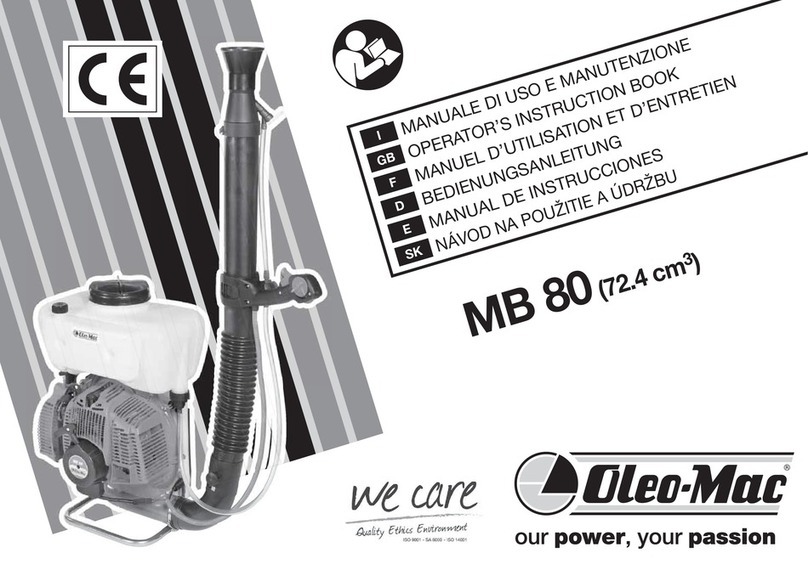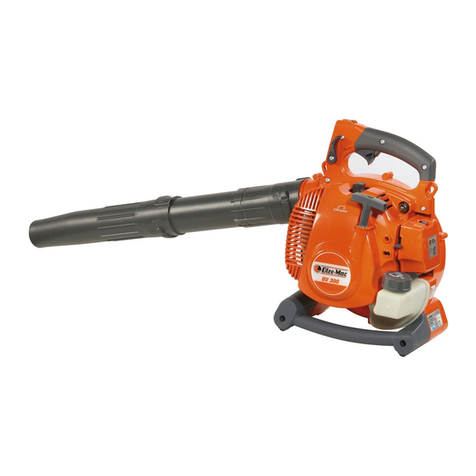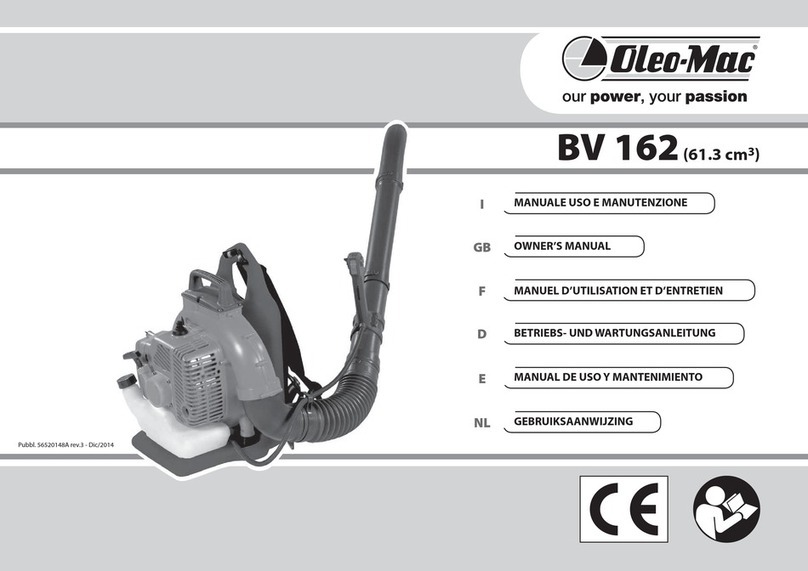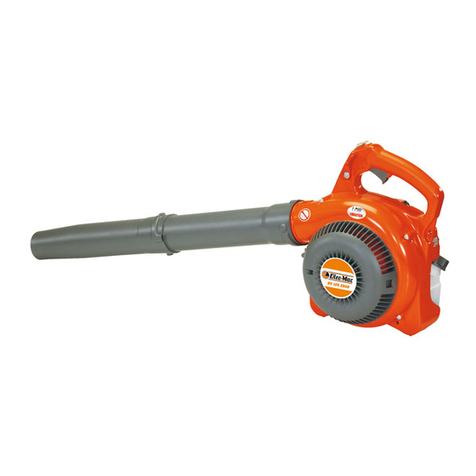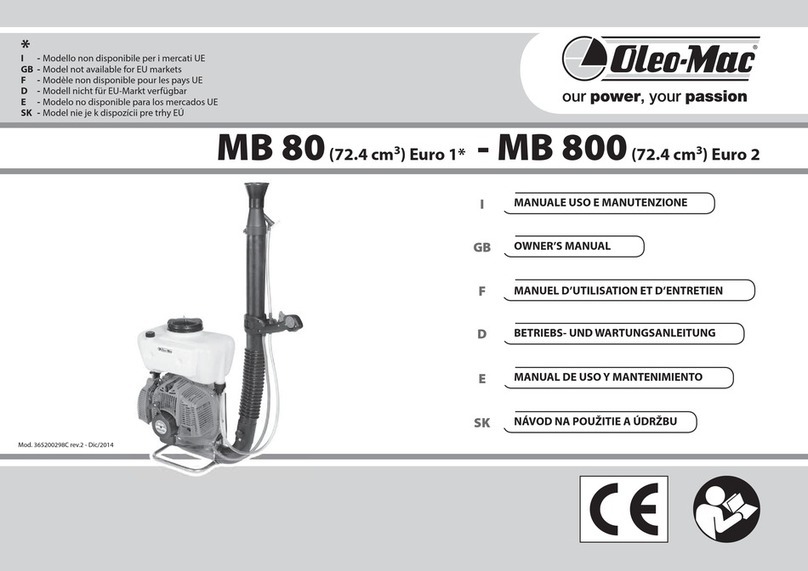
10
1234
p.n. 001001142 p.n. 001001326R
Italiano English Français
ABBIGLIAMENTO PROTETTIVO DI SICUREZZA
SAFETY PROTECTIVE CLOTHING VÊTEMENTS DE PROTECTION
Quando si lavora con il soffiatore usare sempre un
abbigliamento protettivo di sicurezza omologato.
L’uso dell’abbigliamento protettivo non elimina i
rischi di lesione, ma riduce gli effetti del danno
in caso di incidente. Fatevi consigliare dal vostro
rivenditore di fiducia per la scelta dell’abbigliamento
adeguato.
L’abbigliamento deve essere adatto e non
d’impaccio. Indossare un abito aderente
protettivo. La giacca (Fig. 1) e la salopette
(Fig. 2) di protezione sono l’ideale. Non portare
abiti, sciarpe, cravatte o monili che potrebbero
impigliarsi nella sterpaglia. Raccogliere i capelli
lunghi e proteggerli (per esempio con un foulard, un
berretto, un casco, ecc).
Indossare scarpe di sicurezza munite di suole
antisdrucciolo e puntali d’acciaio (Fig. 3).
Indossare gli occhiali o la visiera protettivi
(Fig. 4-5)!
Applicare protezioni dai rumori; per esempio le
cuffie (Fig. 6) o i tappi. L’uso delle protezioni per
l’udito richiede maggior attenzione e prudenza,
perché la percezione di segnali acustici di pericolo
(grida, allarmi, ecc.) è limitata. Rimuovere sempre le
protezioni per l’udito non appena fermate il motore.
Calzare guanti (Fig. 7) che permettano il
massimo assorbimento delle vibrazione.
While working with the blower, always use safety
protective approved clothing. The use of protective
clothing does not eliminate injury risks, but reduces
the injury effects in case of accident. Consult your
trusted supplier to choose an adequate equipment.
The clothing must be proper and not an obstacle.
Wear adherent protective clothing. Protective
jackets (Fig. 1) and dungarees (Fig. 2) are ideal.
Do not wear clothes, scarfs, ties or bracelets that
can stuck into twigs. Tie up and protect long hair
(example with foulards, caps, helmets, etc.).
Safety shoes having skid-proof sole and
anti-piercing insert (Fig. 3).
Wear protective goggles or face screens
(Fig. 4-5)!
Use protections against noises; for example
noise reduction ear guards (Fig. 6) or earplugs.
The use of protections for the ear requests much
more attention and caution, because the perception
of danger audio signals (screamings, alarms, etc.)
is limited. Always remove ear protectors as soon as
the engine has been switched off.
Wear gloves (Fig. 7) that permit the maximum
absorption of vibrations.
Toujours porter des vêtements de protection
homologués pour utiliser un souffleur. Le port de
vêtements de protection n’élimine pas les risques
de blessure mais il peut en réduire les effets en cas
d’accident. Demandez conseil à votre revendeur
habituel pour choisir le vêtement qui répond le
mieux à vos exigences.
Assurez-vous que le vêtement choisi ne gêne pas
les mouvements. Portez un vêtement de protection
près du corps. La veste (Fig. 1) et la salopette
(Fig. 2) de protection sont l’idéal.
Ne portez pas de vêtements, écharpes, cravates
ou bijoux qui risqueraient de s’accrocher dans les
buissons. Nouez les cheveux longs et protégez-les
(par exemple avec un foulard, un béret, un casque,
etc.).
Portez des chaussures de protection avec
semelles antiglisse et pointes en acier (Fig. 3).
Portez des lunettes ou une visière de protection
(Fig. 4-5)!
Utilisez des dispositifs protégeant contre
les émissions sonores; casque (Fig. 6) ou
boules dans les oreilles. Rappelez-vous d’être
extrémement prudents lorsque vous utilisez ce
genre de protection car la perception des signaux
acoustiques de danger (cris, alarmes, etc.) est
réduite. Retirer toujours les protections auditives
dès l’arrêt du moteur.
Portez des gants (Fig. 7) qui absorbent le plus
possible les vibrations.






